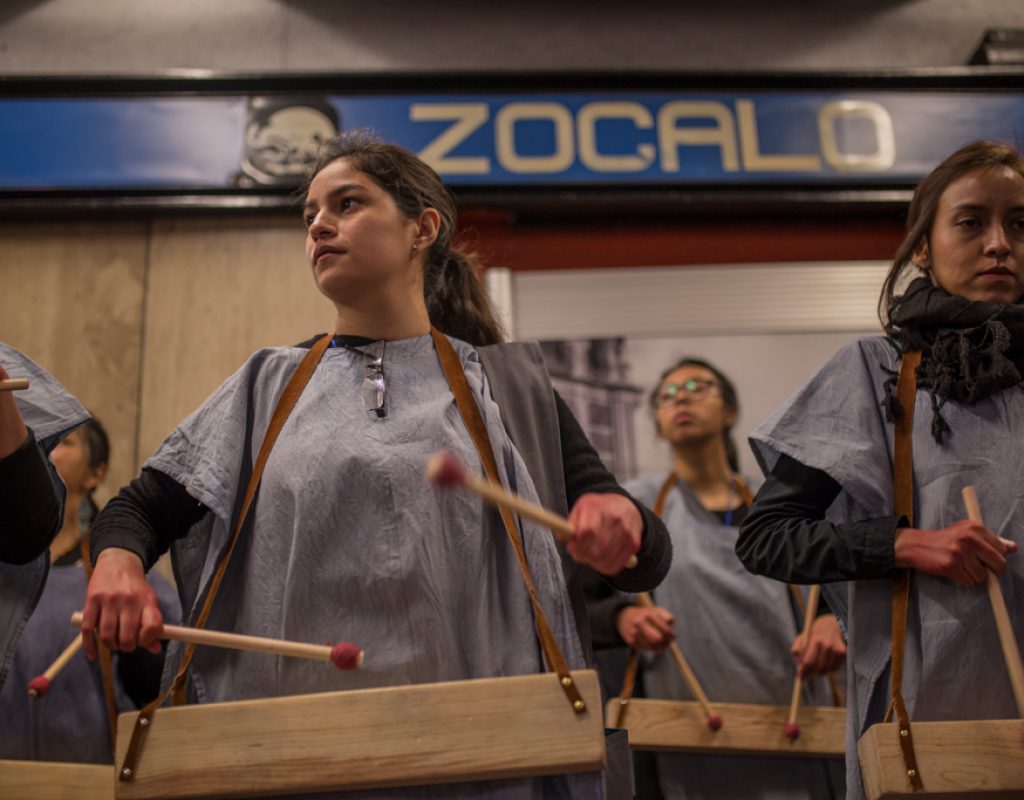
Pulso (Pulse)
Curadora
Data sheet
DETALLES DEL PROYECTO
The invitation to Tania Candiani, given her previous research, was to explore the underground of Mexico City, the deep hidden, the liquid because the Basin is that, an intense and extensive hydrography. By superimposing two maps printed on Albanian paper, one of the old lake and the other of our city’s subway, Tania’s proposal emerged: water as the pulse of the ancient and the contemporary; flow and transit. A sound action for the Mexico City Metro, conceived as a network of communication channels and in the underground rivers of the Basin as another circulation and route network. Superimpose, as in the maps, a present time and a past, both marking a rhythm of the city not always brought to our consciences.
In the investigations on the sound possibilities that Tania Candiani undertook, the teponaztli appeared, a pre-Hispanic drum used for ceremonies by the inhabitants of the Valley of Mexico, mainly by the Mexicas. This instrument, still played today, produces sounds that refer to the liquid, to a flow. Played only by men, we found that the teponaztli represented the union of the intellect with sensuality. Of elucidation and revelation. It was the means to encompass man and the world through rhythm.
How to bring to the contemporary these characteristics of the teponaztli as a sounding board? Expanding its meanings and abstracting its uses and the understanding of gender in ancient cultures. It was thus that the proposal was consolidated so that 195 women distributed in 12 groups each played a teponaztli, and 12 women leaders of each group, setting the guidelines of an ancestral rhythm with a Tarahumara drum, as blows of warning and presence.
“We have been exploring the sound possibilities of teponaztli to achieve rhythms that refer us to breathing, flow, waiting, containment and screaming. We have also traveled the Metro lines and found the routes that we will travel to carry this sound through some tunnels whose architecture and acoustics are very special such as Candelaria, San Lázaro, Instituto del Petróleo…”
The layers of meaning were integrated until composing a collective sound ritual called Pulse, which manifested itself, on Sunday, October 23, 2016, as a warning, a call, a cry.
Like a simultaneous heartbeat of more than 200 women reverberating. It was a mobilization where there was a claim. The stories of each woman gave this characteristic to the piece. Stories of complex and beautiful lives, with the need to be present through the rhythms that would generate a new system of ephemeral but forceful circulation, in the bodies and in the public space of the Metro. Ritual as performance.
“We will each do a reverberation of this beat together. It is a flow of forces where we allow the body to become time and action, to generate a rhythmic code and achieve the faithful transmission of ancestral information and its integration with the present. The instrument has two slits. The Metro is a cleft-wound in the city. The ritual functions as an incision and irruption. It is infiltration. We will saturate with sound and color.” Thus, an itinerary between the surface and the underground was marked out, a journey of ascent and descent that probes those limits between life and death, those energies of pure affectivity that permeated the depths of the City, one that has been humid and unfathomable.
Jessica Berlanga Taylor. Curator.
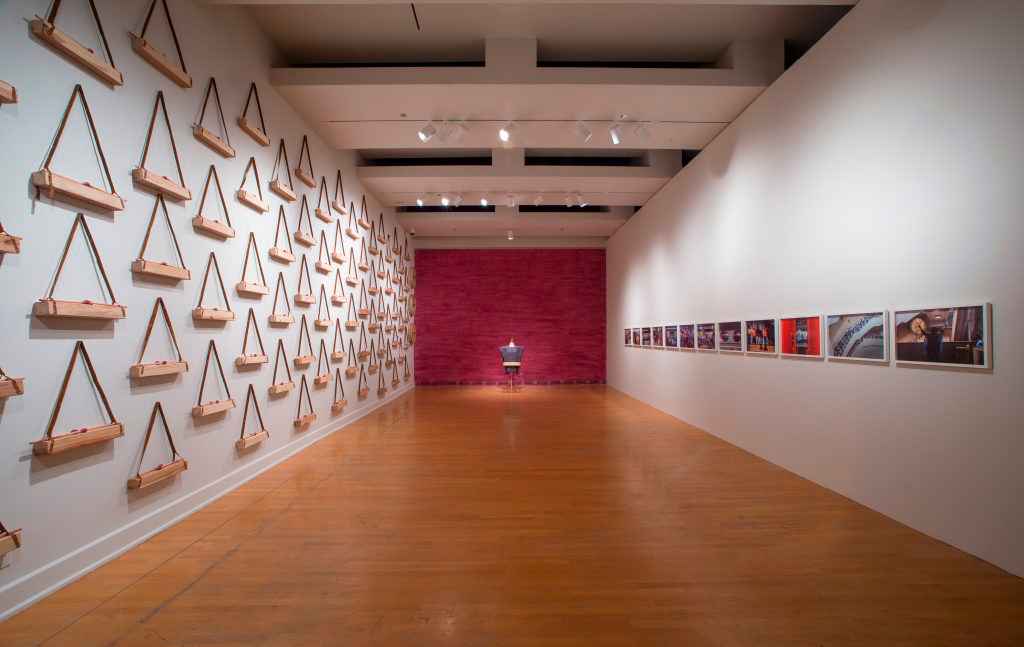
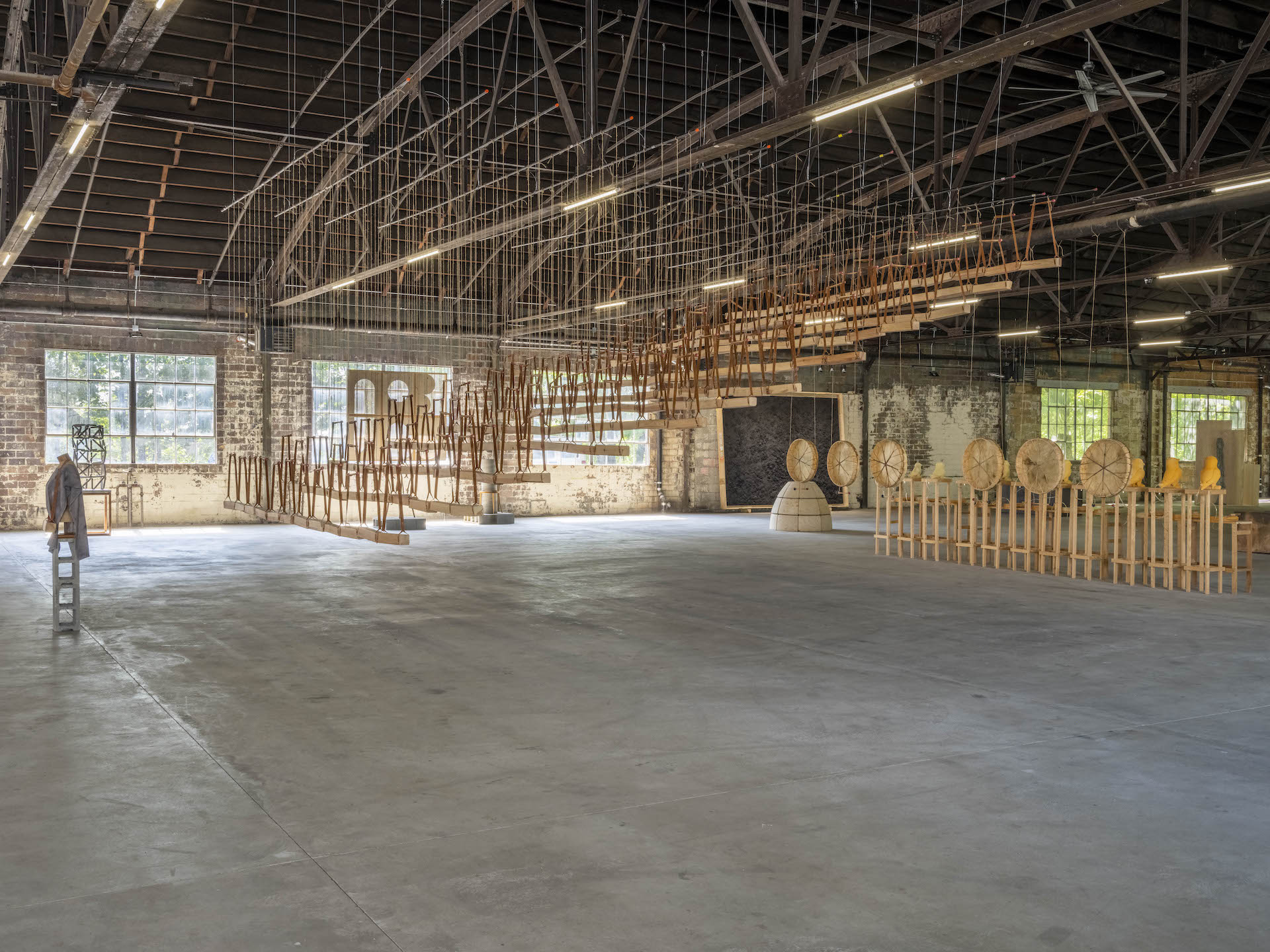
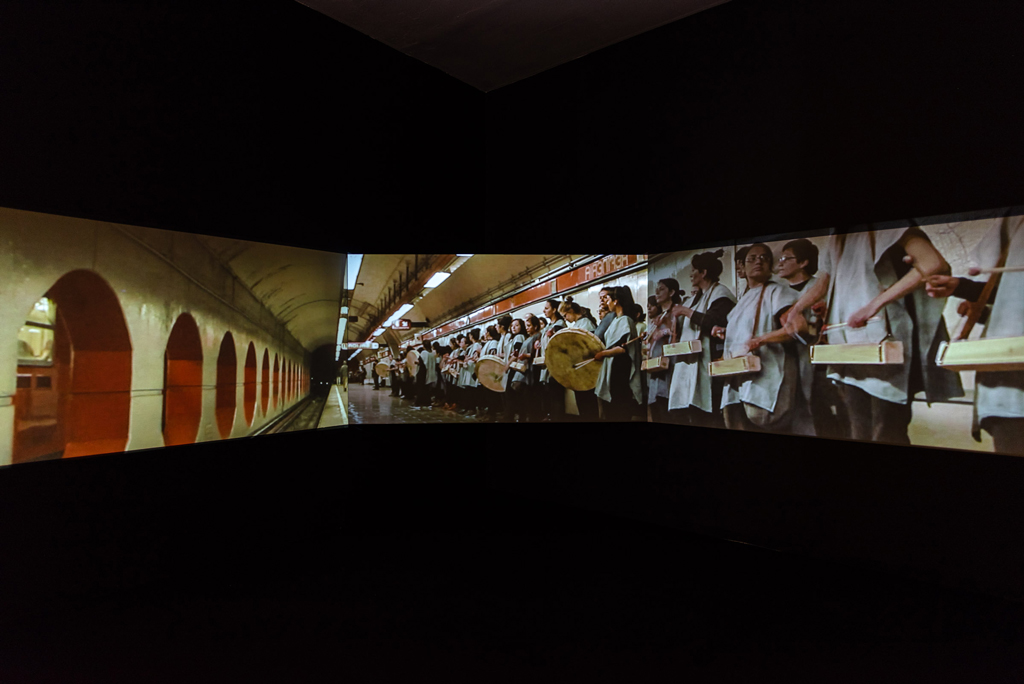
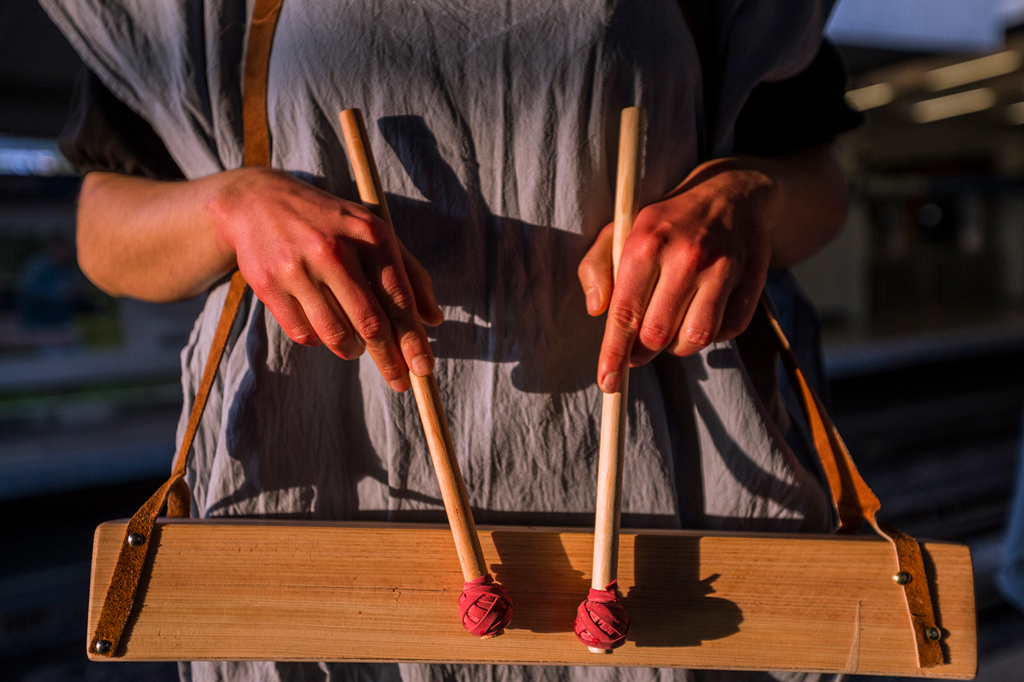
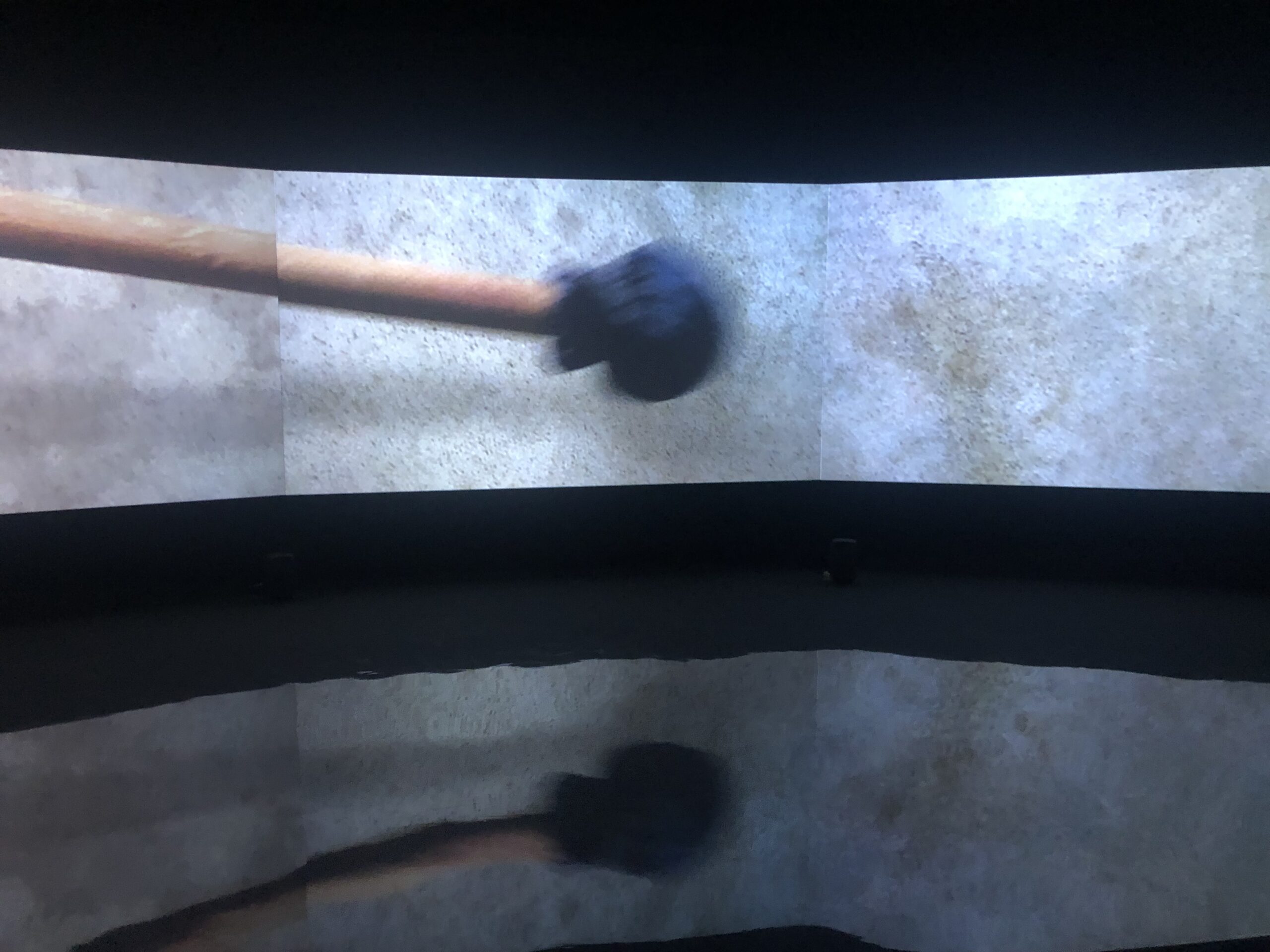
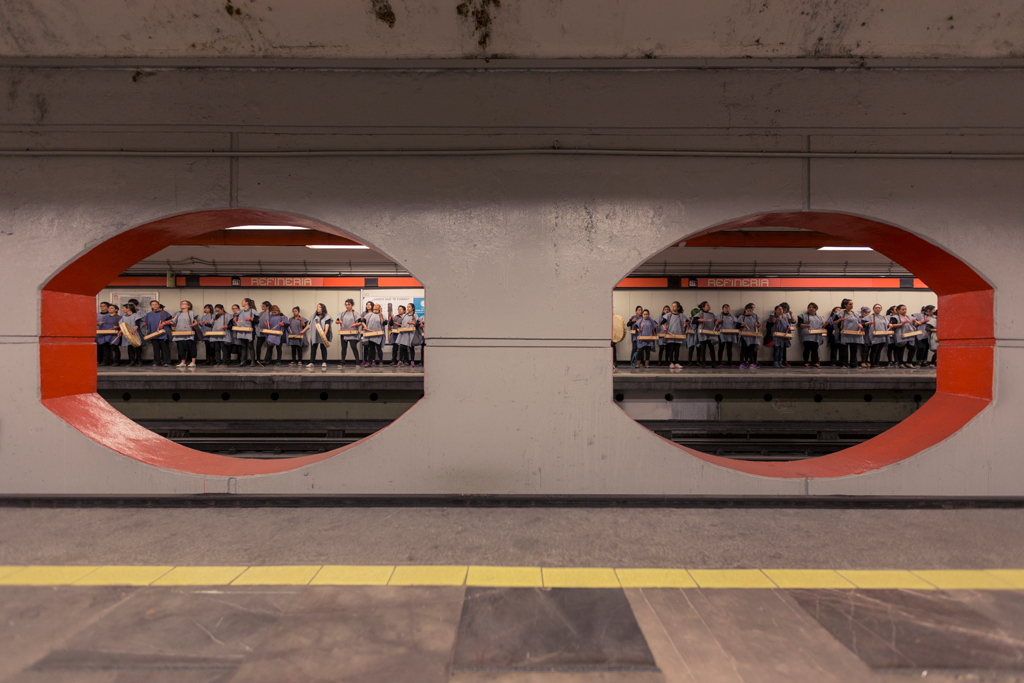
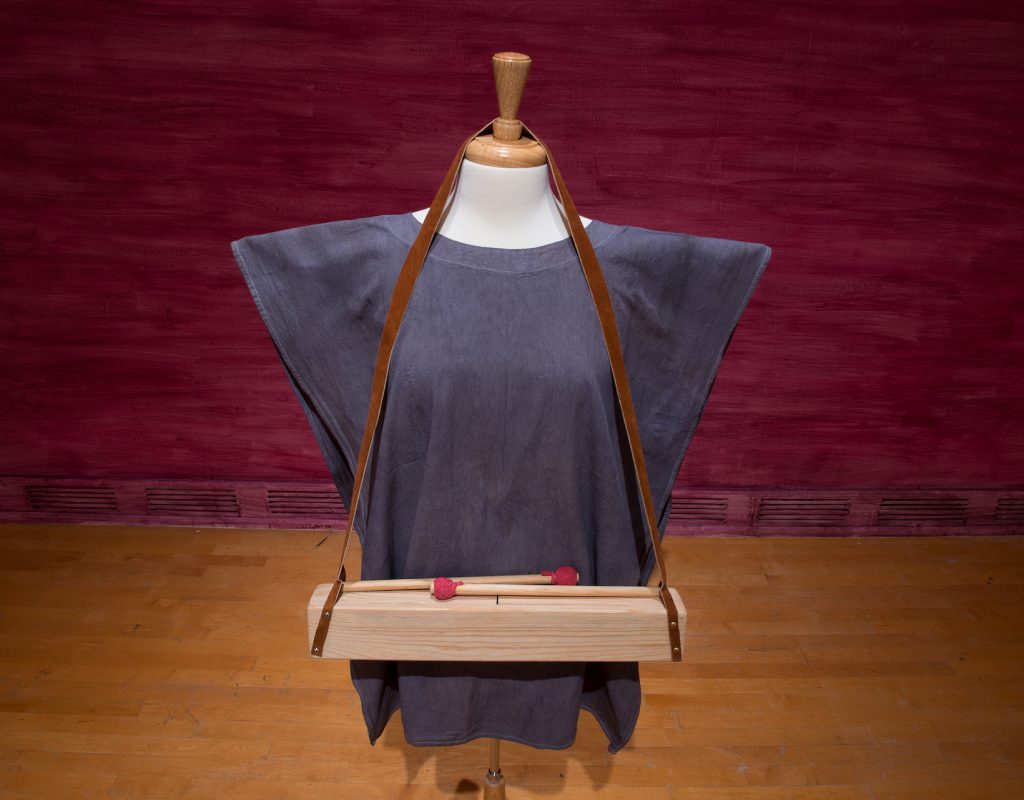
Pulso (pulse). Sculpture.
Data sheet
DETALLES DEL PROYECTO
Pulso (Pulse) was a collective sound action carried out in October 2016 by 195 women and 195 drums, simultaneously in all metro stations in Mexico City. The pre-Hispanic drums that were used, allude to the sound of the channels that existed in the city at that time. During this action, the women moved in groups along the metro stations, marking their pulse with the rhythm of the drums. This instrument was used by the inhabitants of the Valley of Mexico: the teponaztli for ritual ceremonies. Such an instrument produces sounds that refer to the liquid or flow and was forbidden for women because it was thought of as a representation of the female organ. This performance was made as a collaborative sound action exclusively by women, as a form of empowerment and response to those beliefs. Pulso, was an action planned to be recorded and edited to become a continuous claim, like a sound effect that happens with the same force over and over again.
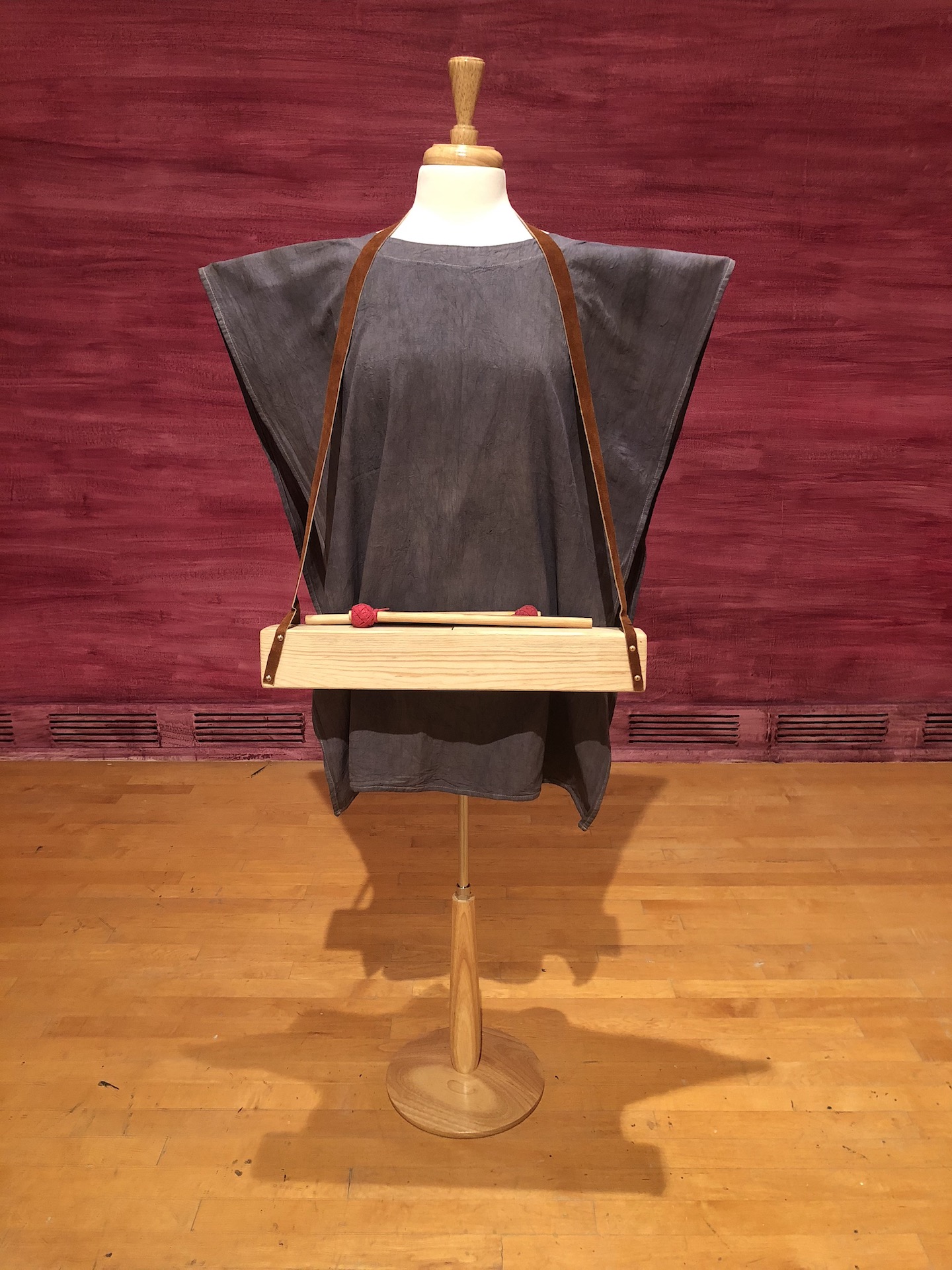
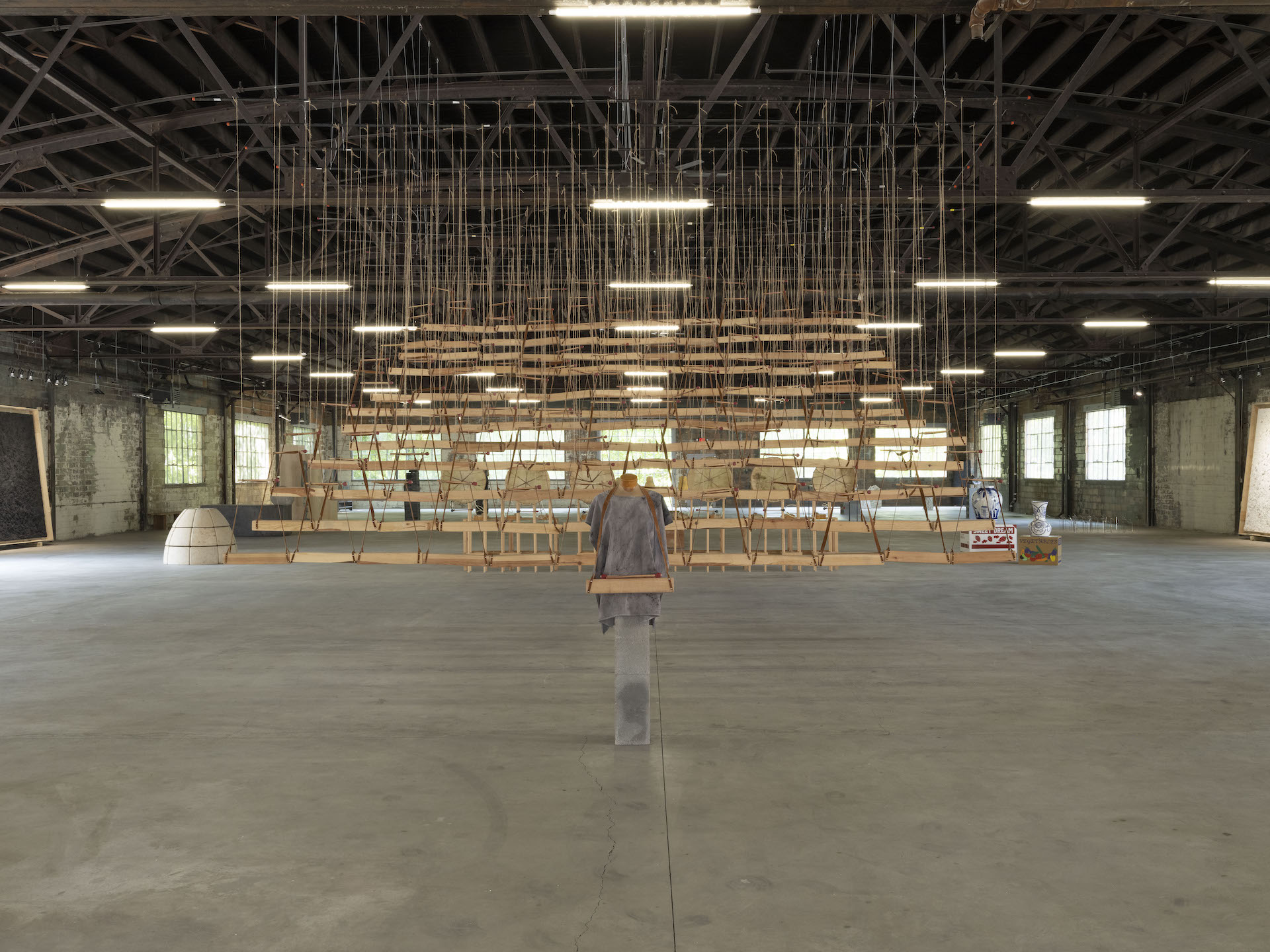
DETALLES DEL PROYECTO
DETALLES DEL PROYECTO
DETALLES DEL PROYECTO
DETALLES DEL PROYECTO
DETALLES DEL PROYECTO